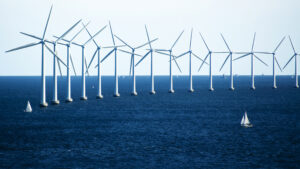From Hydrogen to Offshore Wind: Energy & Power Takeaways from Cleantech Forum Europe
Following a summer full of heated energy-related news, Cleantech Forum Europe 2021 delivered examples of how the roaring 2020s are taking shape. Many of the big national commitments have seen early signs of action at scale. From hydrogen to heating, grids to floating wind, 2021 can be seen across Europe as a race for scale and as a year for realizing ambitions. In the Energy & Power sector, major trends brought to light included:
- Integration efforts in the European Clean Hydrogen market
- Moving from MWs to GWs in floating offshore wind
- Parallel strategies for decarbonizing heat
- Financing the Energy Flexibility transition.
Here are some of my key takeaways.
Integrating projects across the European hydrogen value chain
Hydrogen is now poised to play a vital role in in the energy transition across Europe. With over $500 billion committed for hydrogen’s scale-up through 2030 globally, early-efforts across the value chain are beginning to show signs of progress. Swedish steel producer SSAB has delivered the world’s first 100% fossil-free steel using HYBRIT technology, using hydrogen instead of coal and coke. More broadly, well-funded, multi-counterparty projects are well underway across the value chain including Silver Frog and Green Flamingo. A wave of public financing has also become available for hydrogen scale-ups, with the hope that innovators will look to scale their business in Europe, instead of looking across the pond for unicorn opportunities.
The UK has a great opportunity to supply energy for production of hydrogen, but how well the supply chain is integrated into the energy system itself is going to be a core deciding factor over the next few years. Efforts such as factory and the ERM Dolphyn project will need integrators to ensure pieces of the jigsaw match up. Projects including the Green Hydrogen @ Blue Danube are looking to connect clusters together to create an integrated chain to support Europe’s ambitious plan for up to 80GW of hydrogen capacity. Similarly, .
Moving from MWs to GWs in floating offshore wind
The key message from the floating wind session was scale-up. With costs projected to drop by , pilots across Europe and beyond are now looking to tackle manufacturing and system standardization challenges at scale. Suppliers further upstream in the wind power are more suited to supply in the 100s and 1000s, not the 10s, therefore initial commercial pilots have had their fair share of channel partnership issues. Now, floating wind can look to find its footing among these large-scale suppliers, as well as with some newer entrants who are more familiar with offshore infrastructure.
There will not be a silver bullet when it comes to selecting a technology suite, instead this will be determined by the local characteristics of the project. Deep-water wind projects have a wide range of needs and a range of accommodating innovation will be needed. In addition, the CO2 impact of systems needs to be carefully considered, given the sector could . Steel and concrete are leading material contenders, and the upstream emissions will have to be modelled correctly to measure project impact. Lastly, shipyards are a likely champion to lead the market, as manufacturing and offshore deployment infrastructure can drastically drive down costs. With that in mind, Korea is positioned to be a leader in the market this decade.
Parallel strategies for decarbonizing heat
Heating remains a complex and challenging market to decipher. With global demand accounting for half of final energy consumption it remains a cornerstone of the decarbonization challenge. Renewable heating and cooling have for many years remained a lower priority item for countries around the world, taking a back seat behind electricity policy. Now, heating and cooling is finally moving to the forefront of Net Zero Emission strategies.
A systems approach is being taken to address the complexity of the problem with an array of direct electrification and indirect electrification efforts. In space heating, electrification is a primary goal with heat pumps leading the charge, but hydrogen is a likely contender where heating infrastructure is not in place. In high-temperature process heating, significant progress is being made to capture and reuse waste heat, and renewables are increasingly being used to supply high-temperature heat. Like many other expensive decarbonization challenges, financing from the public and private sector is going to be a determining factor for progress over the coming years.
Financing the energy flexibility transition
From residential batteries, heat pumps, to electric vehicles, market forecasters are increasingly inundated by the opportunities for energy flexibility projected to come online in the next decade. However, for average consumers, assets remain out of reach from a cost perspective. In the Future Energy System session at Cleantech Forum, innovations were bought to light to help tackle those customers who are unable to pay. Many virtual power plants providers are exploring hardware-as-a-service models, often relying on third party financers (banks) to provide the funds. This pay-as-you-save model could help bridge the cost gap until assets such as residential batteries become accessible. Green mortgages are another potential financing mechanism. As an incentive for the borrower to either buy a green building or to renovate an existing one to make it greener, the bank would offer them either a lower interest rate or an increased loan amount.


